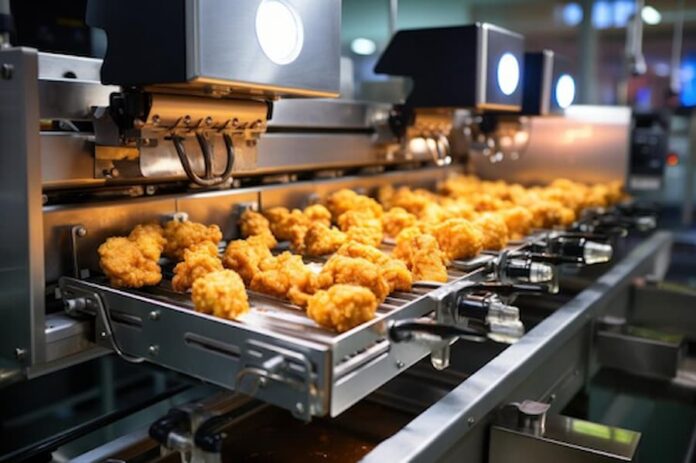The primary distinction between manual fryers and automated fryers lies in their functionality. In manual fryers, the operator is responsible for managing the temperature, monitoring the cooking process, and determining the correct timing. This requires constant supervision and adjustments. Conversely, automated fryers come equipped with advanced features such as built-in sensors and timers, which allow the machine to automatically regulate the temperature and cooking duration. Fried chicken machine eliminates the need for continuous human intervention, making the frying process more efficient.
Cooking Consistency in Manual vs Automated Fryers
The main benefit that an automated fryer is able to deliver involves the ability of consistent cooking results. Here, such fryers automatically regulate temperature and also have predetermined set times for cooking to guarantee uniform results for every batch. The manual fryers depend on operator’s attention and knowledge, with possible variations in the product. Human Error in that process, as characterized by a failure to control heat, or fail to catch the perfect frying time, which translates to producing low quality fried items.
Fryer Speed of Operation
Automation is faster in fryer operations compared to manual fryers for most people. Automated fryers allow successive frying batches to be done faster, saving time. This is because they maintain consistency of temperature and optimize the frying times. In such kitchen counters, time is essentially considered one of the variables. The manual fryers take much longer because the operators have to take some of their time to monitor the temperature among other crucial adjustments that may take time.
Ease of Use in Manual vs Automated Fryers
Automated fryers are relatively simple to use for a beginner. They use simple controls and predeterminate timings that facilitate the user in frying food with little or no supervision. It is easy to use and eliminates frequent errors. It requires expertise in using manual fryers. Temperature control and cooking times need to know how to proceed for desired output.
Preventive Maintenance Requirements for Manual and Automated Fryers
The manual fryer will typically be simpler and easier to maintain due to its straightforward design with fewer parts that could be possible sources for malfunction. Automated fryers enjoy a benefit from moving parts and, in some instances, several sensors that need regular maintenance and possibly more regular cleaning. Most models, however, feature self-cleaning functions, so it is easier to maintain this type of fryer in the long term.
Energy Efficiency in Fryers
Automated fryers are far more energy efficient as compared to the manual fryers because they maintain consistent oil temperatures, which doesn’t heat or cool the oil unnecessarily. Energy saving in some automated fryers can be coupled with features like stand-by. Compared to automatic fryers, the efficiency of a manual fryer may sometimes leave the user depending on the skill of the operator, thereby causing poor energy usage efficiency control.
What Is the Cost Difference Between a Manual and an Automated Fryer?
Automatic fryers, at times, are more expensive at the outset than manual fryers because of the technology and additional features included in them. Automated fryers can be comparatively cost-effective in the long run since labor requirements can decrease and even further energy can be saved. At the same time, manual fryers have lesser initial costs but can cost more labor as they must be constantly monitored and entail more manual work.
Consistency in Quality and Waste Minimization
Automatic fryers minimize waste since there is a precise control of time and temperature in cooking. You hardly make under or overcooked food, so the chances of disposing of such products are minimal. In case you have an unvigilant and uninformed operator running manual fryer then he or she might engage in more waste due to the inconsistency of frying with regard to food quality and portioning.
Safety Attributes of Fryers
Automated fryers have other safety features that may come with the equipment, such as automatic cut-off systems that prevent overheating and oil sensors. These built-in mechanisms reduce the possibility of accidents, such as oil fires or burns. On the other hand, manual fryers demand more attention from the operator towards having safe output, leading to a probable accident if the safety guidelines are not followed strictly.
Ideal Use Cases for Manual and Automated Fryers
Small-scale operations would best suit manual fryers since the customers prefer customized cooking, and there’s a hands-on feeling associated with the food being prepared. Flexibility goes a long way in this aspect, especially where smaller batches or more precise requirements may be involved. Automated fryers are best suited for high-volume restaurants, cafeterias, and other commercial environments. Given the consistency in the output with less oversight required, their proficiency will be very ideal for most restaurants, cafeterias, or other commercial institutions where efficiency and speed constitute an essence.
Visit Quice for more informative blogs.

